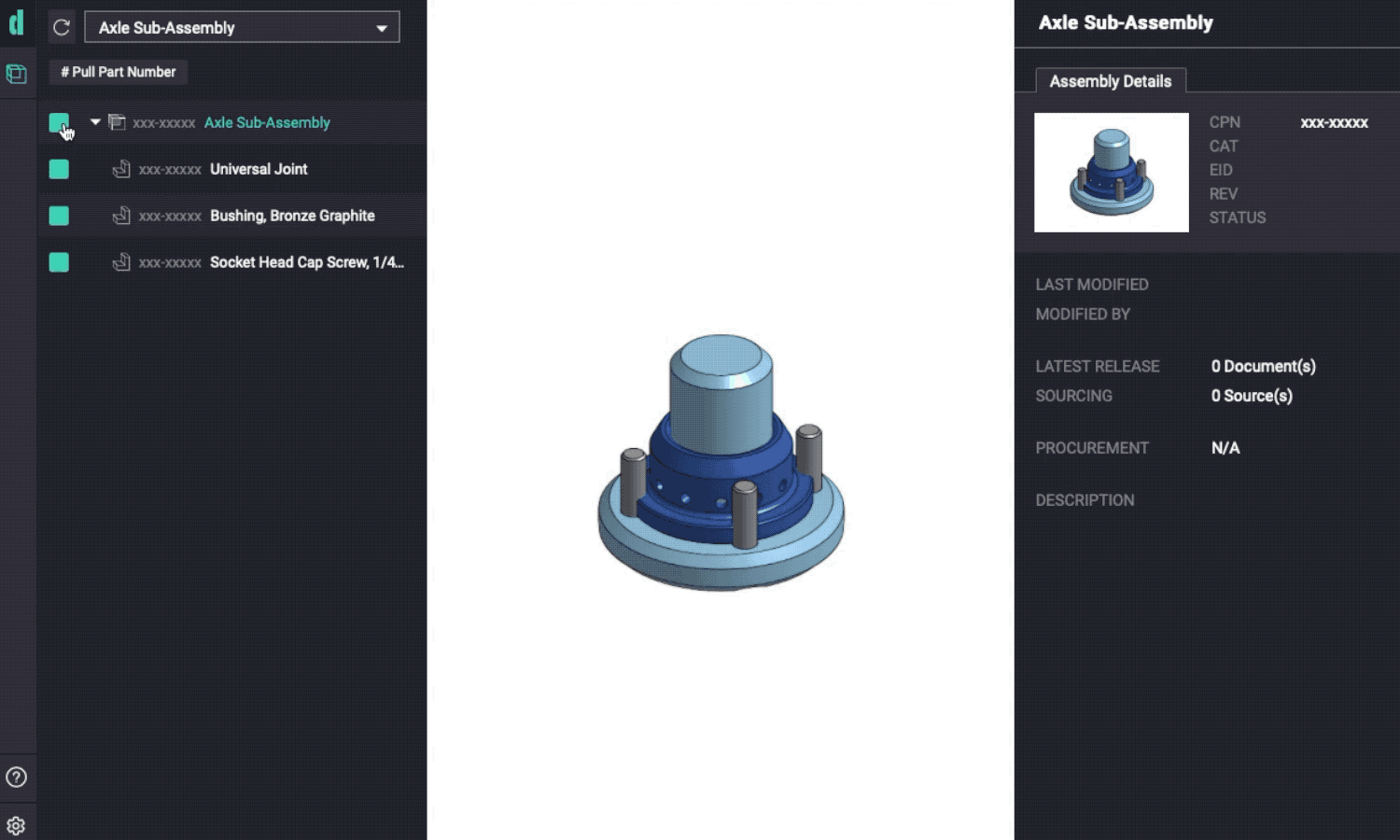TABLE OF CONTENTS
Hardware companies using Onshape are already advancing towards agile hardware development cycles, and the next logical step is integrating cloud-native PLM software for effective product lifecycle management.
Here are the top cloud software integration needs for companies connecting cloud-native PLM to Onshape:
- Part-number integration: A category-based part number scheme allows parametrically-based searches and validation checks.
- Release management integration: When release management is built directly into the Onshape interface, engineers easily coordinate with the rest of the company.
- Automated exporting: PLM systems automatically distributing updated information reduce mistakes and increase alignment.
- Ease of implementation: Getting the cloud-native PLM system up and running quickly reduces TCO and increases the team’s efficiency.
Benefits of PLM and Onshape
As your company moves toward rapid development of new products, cloud-native Product Lifecycle Management (PLM software) makes communicating Onshape designs quick and easy across the organization and reduces the number of administrative tasks for engineers and product designers.
Hardware development companies can stay ahead of the competition by implementing a PLM platform alongside Onshape. For example, a PLM integration with Onshape allows engineers to continue working in the familiar Onshape interface while tapping into the capabilities of a PLM system, streamlining many of the out-of-scope processes for Onshape.
Combining the two tools empowers engineers and designers to spend more time designing and less on administrative tasks such as managing part number spreadsheets, processing ECOs, and exporting files for use by manufacturing stakeholders.
Let’s examine the cloud software integration needs of companies looking to connect PLM to Onshape more closely.
Part Number Generation
One of the challenges for hardware teams is developing, codifying, and managing a part number system. Many teams start with a part numbering system constructed and managed in a spreadsheet. Team members access the spreadsheet, record that they will be using the next available part number, and then save it so that team members will know which part numbers are available and which are not. While this process is common among early-stage companies, this type of system is fraught with risk and is time-consuming
The best situation for engineers is an automated PLM-based part numbering system that handles part number assignment duplicates. With this system, everyone can avoid the stress of managing a shared spreadsheet and the risk of propagating duplicate part numbers downstream into manufacturing software systems.
Using a PLM with Onshape, users can quickly assign new part numbers to Onshape parts (and assemblies) in a matter of seconds. By assigning part numbers, not only are the part number values written to the corresponding Part Number fields for each part in Onshape, but each Onshape part will now have a component record within your Duro account library.

Release Management Integration
Duro’s app for Onshape has been designed to integrate easily with Onshape’s existing Release Management architecture. Users can now submit a release candidate in Onshape, automatically creating a draft ECO in Duro. With a ready-made draft ECO, users can now extend participation in the ECO approval to team members who do not have access to Onshape.
With Duro’s ECO module connected to Onshape’s release management process, teams will be able to accelerate the review of new designs generated in Onshape and expand the visibility that other departments have into the design process occurring in Onshape. This increase in visibility is facilitated by the inclusion of non-Onshape users in the approval process and the automated publishing of design files to Duro.
Automated Exporting
Upon the release of any new part or assembly revision, Duro runs an automated export of the drawing for the approved design as well as production format files (e.g., STEP, Parasolid, DXF, etc.) that can be used by manufacturing and production stakeholders.
Hardware engineers are all too familiar with frequent requests to generate PDF drawings and production format files for QA, manufacturing, and production stakeholders. This job is now done for them by Duro through automated exports of approved releases.
Stakeholders in need of released PDF drawings and production files can now simply search and download them from Duro.
Ease of Implementation
Competitive companies can’t afford to slow down for a few months to complete a PLM integration requiring major reconfigurations of their existing systems or staff training. Cloud PLM provides rapid integration, often in a matter of days or hours.
Cloud-native PLM implementation time is incredibly short compared to the time it saves the team over time. Duro’s built-in cloud software integration with Onshape dramatically reduces the complexity of integration and the learning curve for hardware engineers.
Duro’s PLM app for Onshape is easy to implement and allows the hardware designers to continue using their familiar workflows. At the same time, the company will begin to connect the engineering and design functions to the other critical functions, allowing all internal and external team members to access a centralized, single source of truth that is easy to maintain.
Onshape and Duro: Cloud-Native Efficiency
As hardware companies move to more agile development and release cycles, the cloud software integration shortens time to market, eliminates departmental silos, and reduces the burden on IT departments. Duro PLM delivers a seamless integration with Onshape that benefits the entire organization.
Get in touch to see how easy it is to add Duro PLM for Onshape to your hardware development lifecycle. You can also take a quick tour of Duro PLM below.

